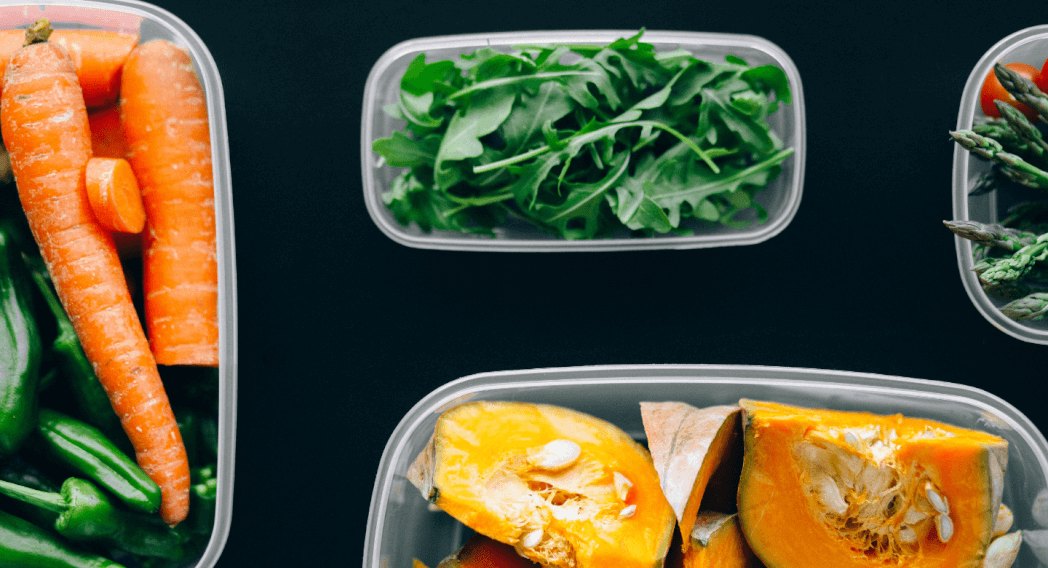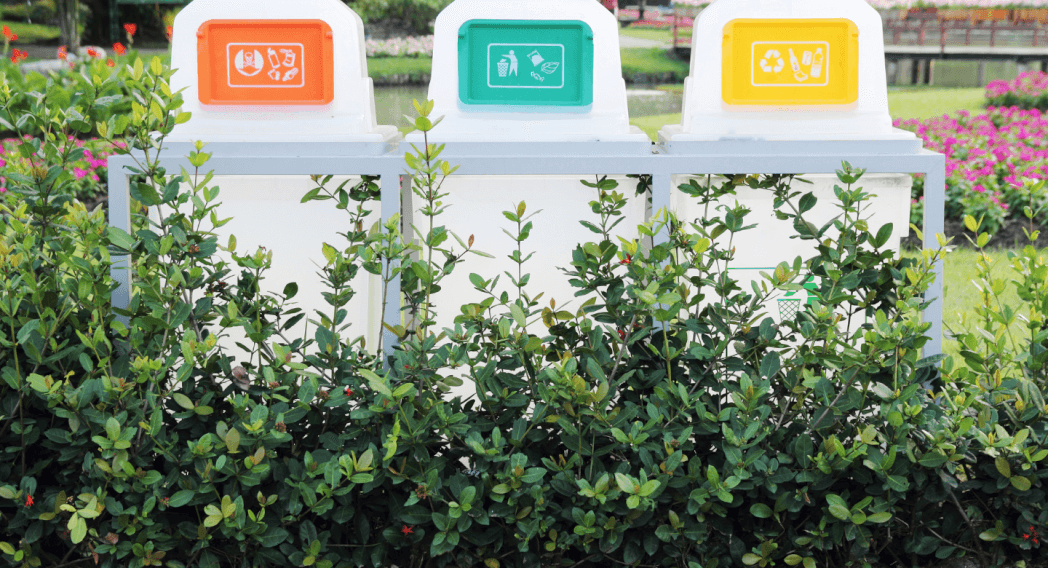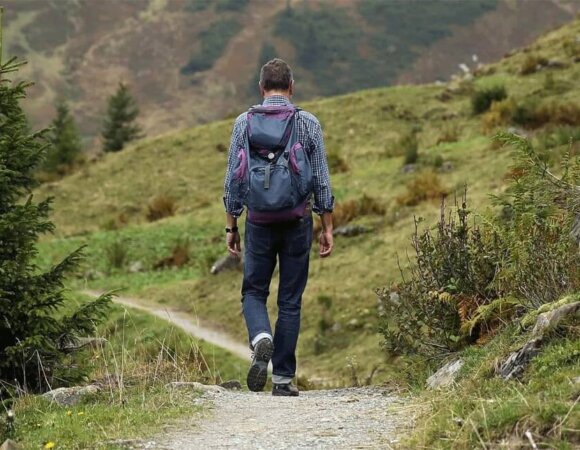3Rs of Sustainability for Plastic Food Containers
Reduce plastic waste with the 3Rs of Sustainability for plastic food containers. Learn eco-friendly tips for minimizing waste, reusing containers safely, and recycling them properly to protect the environment.
Table of Contents
TogglePlastic food containers are incredibly convenient for storing and transporting food, but their environmental impact is significant. When disposed of improperly, they contribute to the growing issue of plastic pollution, affecting wildlife and ecosystems. Fortunately, by following the 3Rs of Sustainability for Plastic Food Containers—Reduce, Reuse, and Recycle—you can minimize waste and help protect the environment.
Why Sustainability Matters in Travel and Tourism
Much like plastic food containers, tourism can have a significant impact on the environment. From carbon emissions to waste generation, traveling can contribute to environmental degradation. Sustainable travel, however, works to mitigate these impacts by encouraging practices that reduce harm to nature, support local economies, and promote responsible tourism. By adopting sustainable travel practices, such as carrying reusable water bottles and food containers, tourists can make a direct contribution to reducing plastic waste and promoting sustainability on a global scale.

How Sustainable Travel Helps:
- Protects natural ecosystems and wildlife: Sustainable travel practices minimize disruptions to local environments, preserving wildlife and natural landscapes for future generations.
- Supports local communities and economies: Eco-friendly travel supports local businesses, providing economic benefits while ensuring resources are used responsibly.
- Reduces pollution and waste: By making conscious choices—such as opting for eco-friendly accommodations, using public transport, or cycling—travelers help reduce waste and pollution along travel routes.
How to Travel Sustainably:
- Carry a reusable water bottle and food containers to avoid plastic waste.
- Choose eco-friendly accommodations with sustainable practices.
- Use public transport, cycle, or walk instead of renting cars.
- Respect local cultures, traditions, and natural spaces.
- Leave no trace—dispose of waste responsibly and avoid littering.
By incorporating the 3Rs of Sustainability for Plastic Food Containers into both your daily life and your travel habits, you can make a lasting, positive impact on the planet. Every small step, whether it’s reducing plastic consumption, reusing containers, or recycling properly, contributes to a more sustainable and eco-friendly future.
The Role of the 3Rs (Reduce, Reuse, Recycle)
Reduce
One of the most effective ways to tackle the problem of plastic pollution is by reducing the use of plastic food containers. The 3Rs of Sustainability for Plastic Food Containers encourage us to be mindful of our consumption and choose more eco-friendly alternatives. Opt for reusable glass, metal, or bamboo containers, which are often more durable and sustainable than plastic.
How to Minimize Waste Generation from Plastic Food Containers
Minimizing waste generation from plastic food containers is essential for reducing environmental pollution. The 3Rs of Sustainability for Plastic Food Containers encourage reducing the overall consumption of plastic. Here are some practical steps to help reduce waste from plastic containers:

- Choose Products with Less Packaging: Opt for products that come with minimal plastic packaging or choose bulk items to reduce unnecessary plastic waste. For instance, buying larger containers instead of single-serving plastic items can significantly cut down on packaging waste.
- Switch to Eco-Friendly Alternatives: Look for sustainable alternatives to plastic containers, such as glass, stainless steel, or biodegradable options. These materials have a much lower environmental impact and are often reusable, reducing the need for plastic altogether.
- Avoid Single-Use Plastics: Reduce reliance on disposable plastic containers, such as those used for takeout or pre-packaged meals. Instead, carry your reusable containers when purchasing food or drinks from cafes or restaurants.
- Opt for Sustainable Brands: Support companies that use environmentally responsible packaging. Many brands are now offering products packaged in recyclable, compostable, or biodegradable materials, providing a more sustainable option compared to conventional plastic.
Eco-Friendly Alternatives
Switching to eco-friendly alternatives is an essential step in the 3Rs of Sustainability for Plastic Food Containers. Here are some alternatives that can help reduce plastic waste:

- Glass Containers: Glass is a durable, reusable, and recyclable alternative to plastic containers. Glass containers are free from harmful chemicals found in some plastics and can be used for storing food safely.
- Stainless Steel Containers: Stainless steel containers are highly durable, long-lasting, and free from harmful substances like BPA, making them an excellent alternative to plastic for food storage. They are easy to clean and can withstand high temperatures, making them suitable for a variety of uses.
- Bamboo Containers: Bamboo is a renewable resource, and bamboo containers are lightweight and compostable. They are a great eco-friendly alternative to plastic, offering a sustainable option for food storage.
- Beeswax Wraps: Beeswax wraps are reusable, compostable, and perfect for wrapping food. They can replace single-use plastic wraps or bags and are ideal for storing produce, sandwiches, and snacks.
- Silicone Bags or Containers: Reusable silicone bags or containers are a great alternative to plastic zip-lock bags or plastic storage containers. They are durable, non-toxic, and can be used for a wide range of purposes, from storing leftovers to packing lunches.
By choosing these eco-friendly alternatives, we can significantly reduce the environmental impact of plastic food containers and move toward a more sustainable lifestyle.
Reuse
The 3Rs of Sustainability for Plastic Food Containers also highlight the importance of reusing plastic containers. Instead of discarding plastic containers after a single use, repurpose them for storage, organization, or even as containers for small items around your home or office. Many plastic food containers, such as those used for yogurt, takeout, or leftovers, can be washed and reused multiple times.

This not only reduces the amount of plastic waste generated but also extends the life of the container, ultimately minimizing the need to purchase new ones. By incorporating reusable containers into your daily routine, you contribute to the sustainable management of plastic waste.
Ways to Reuse Plastic Food Containers
Rather than disposing of plastic food containers after a single use, reusing them is an excellent way to apply the 3Rs of Sustainability for Plastic Food Containers. Here are some creative and practical ways to reuse plastic food containers:
- Storage Solutions: Repurpose plastic food containers to organize small items around your home, office, or garage. They can be used to store office supplies, craft materials, or small tools, helping you keep things neat without the need for new storage containers.
- Plant Pots: Plastic food containers, especially those with drainage holes, can be used as plant pots for growing herbs, flowers, or small vegetables. Simply add a few drainage holes in the bottom, and you’ve got an eco-friendly planting container.

- Craft Projects: Plastic containers can be reused in arts and crafts projects. From making bird feeders to creating unique home décor items, there are endless possibilities for reusing plastic containers in creative ways.
- Food Storage: Continue to use plastic containers for storing leftover food, dry goods, or even meal prepping for the week. By reusing the containers, you extend their life and reduce the need to purchase new ones.
- Travel Storage: Use plastic containers to organize small items when traveling. They can be perfect for storing toiletries, small accessories, or snacks, keeping your belongings organized, and reducing the need for plastic bags.
- Kids’ Activities: Plastic containers are great for children’s activities, such as organizing toys, puzzles, or building blocks. They can also be used to hold crayons, markers, or other art supplies, making cleanup easier.
By finding new purposes for plastic food containers, you reduce the amount of plastic waste you generate and help promote a more sustainable lifestyle. Reusing containers not only saves money but also contributes to a cleaner planet.
Recycle
Recycling is another critical element of the 3Rs of Sustainability for Plastic Food Containers. When reuse is no longer an option, recycling ensures that plastic containers can be processed and repurposed into new products, reducing the need for new plastic materials. Properly recycling your plastic containers ensures they don’t end up in landfills, where they can take hundreds of years to decompose. Be sure to rinse out containers before recycling to prevent contamination, and check local recycling guidelines to ensure the plastic is properly sorted and processed.
Steps to Recycle Plastic Food Containers Responsibly
Here are some important steps to ensure you’re recycling your plastic food containers responsibly:

- Check Local Recycling Guidelines: Not all plastic food containers are recyclable in every area. Make sure to familiarize yourself with your local recycling program’s guidelines to determine which types of plastic can be recycled in your area. Look for symbols like the recycling triangle and plastic resin codes (1-7) on the containers to know which plastics are accepted.
- Clean and Rinse Containers: Before recycling, ensure that the plastic containers are clean and free of food residue. Leftover food can contaminate the recycling stream, making the entire batch unusable. Rinse out containers to prevent contamination, but avoid using excessive water to conserve resources.
- Remove Non-Plastic Parts: Some plastic food containers have non-plastic components such as metal lids, paper labels, or rubber seals. These should be removed before recycling. Separate the components and recycle them according to your local recycling program’s rules.
- Avoid Contaminating the Recycling Bin: Ensure that the plastic containers you place in the recycling bin are free of grease or food particles. If the container can’t be thoroughly cleaned, it’s better to dispose of it in the trash rather than risk contaminating the recycling stream.
- Know Which Plastics Are Accepted: Common plastics such as polyethylene terephthalate (PET) and high-density polyethylene (HDPE) are widely accepted in most recycling programs. However, some plastics like polystyrene or polyvinyl chloride may not be recyclable in many areas. Be sure to check local recycling guidelines to make informed decisions.
- Consider Recycling Programs That Accept Multiple Plastics: Some specialized recycling programs, like those operated by large recycling centers, may accept a wider range of plastics. Research and use these programs if they are available in your area to ensure the highest recycling rate for your plastic containers.
Sustainable Production Practices
Sustainable production practices in the manufacturing of plastic food containers are crucial for reducing their environmental impact. These practices focus on reducing resource consumption, minimizing waste, and making the production process more energy-efficient. Below are some key practices:

- Use of Recycled Materials: Companies are increasingly using recycled plastic materials to create new containers, reducing the need for virgin plastic and conserving resources. Using recycled plastic also helps close the loop in the circular economy, where plastic waste is repurposed into new products.
- Energy-Efficient Manufacturing: Sustainable production involves minimizing energy usage during the manufacturing process. By using renewable energy sources like wind or solar power, and implementing energy-efficient technologies, manufacturers can significantly reduce their carbon footprint.
- Minimal Packaging: Sustainable production practices emphasize reducing packaging waste. Manufacturers opt for minimalist packaging designs that use less material while still providing the necessary protection for products. This also reduces the overall plastic waste generated from food containers.
- Closed-Loop Systems: Some manufacturers are adopting closed-loop production systems, in which waste materials from the production process are reused within the facility or repurposed into new products. This minimizes waste and reduces the need for new raw materials.
Key Sustainable Practices in Food Container Production:
- Biodegradable Materials: A growing trend in sustainable food container production is the use of biodegradable materials, such as plant-based plastics or compostable bioplastics. These materials break down naturally and have a much lower environmental impact than traditional plastics.

- Plant-Based Packaging: Plant-based food containers made from materials like cornstarch, sugarcane, or bamboo are renewable, biodegradable, and compostable. They are increasingly being used as alternatives to conventional plastic containers, offering a more sustainable solution for packaging food.
- Reduction of Toxic Chemicals: Manufacturers are increasingly moving away from using toxic chemicals in plastic production, such as bisphenol A (BPA). Using safer materials in food containers ensures that fewer harmful chemicals are leaching into food and the environment.
- Lightweight Design: Designing food containers to be lighter reduces the amount of plastic used in manufacturing. This not only reduces material consumption but also lowers transportation costs and energy consumption, leading to a more sustainable overall production process.
- Durable and Long-Lasting Products: Producing food containers that are durable and designed to last longer reduces the need for frequent replacement, decreasing waste over time. High-quality, long-lasting containers help consumers reduce their environmental impact by needing fewer replacements.
- Eco-Friendly Printing: Many food container manufacturers are now using eco-friendly inks and dyes in their packaging designs. These inks are made from natural sources and are biodegradable, further reducing the environmental impact of food packaging.
Regulatory Insights & Industry Standards in India
Regulatory Insights:
- Plastic Waste Management Rules, 2016 (Amended in 2021 & 2022): Restricts the use of single-use plastic food containers and encourages recyclable or biodegradable alternatives.
- Food Safety and Standards Authority of India (FSSAI) Regulations: Mandate that plastic food containers must be food-grade, free from harmful chemicals like BPA, and safe for repeated use.
- Food Safety and Standards (Packaging) Regulations, 2018: These regulations mandate that plastic materials used for food packaging must comply with specific Indian Standards (IS) to ensure they are safe for food contact. For instance, IS 10146 pertains to polyethylene, and IS 10910 pertains to polypropylene materials used in food packaging.
- Ecomark Scheme: Initiated in 1991, the Ecomark is a certification mark issued by the Bureau of Indian Standards (BIS) to products that have minimal impact on the ecosystem. Plastic products, including food containers, that meet these environmental criteria can carry the Ecomark label, promoting eco-friendly practices.

Industry Standards:
- Bureau of Indian Standards (BIS) IS 9833:2018: Specifies safety requirements for plastic materials used in food containers to prevent contamination.
- Extended Producer Responsibility (EPR): Requires manufacturers and brands to take responsibility for collecting and recycling plastic food containers after consumer use.
- IS 10146: Specification for Polyethylene in Contact with Foodstuffs: This standard specifies the requirements for polyethylene materials intended for use in contact with food products, ensuring they do not contaminate the food and are safe for consumers.
- IS 10910: Specification for Polypropylene in Contact with Foodstuffs: Similar to IS 10146, this standard pertains to polypropylene materials used in food contact applications, outlining the necessary safety and quality parameters.
Carbon Footprint Analysis of Plastic Food Containers
Plastic food containers are widely used for packaging and storing food, but their production and disposal come with a significant environmental impact. Let’s break down their carbon footprint step by step.
Step 1: Raw Material Extraction (Making the Plastic)

What happens?
Plastic food containers are made from petroleum-based materials like polypropylene (PP), polyethylene (PE), or polystyrene (PS). These raw materials come from crude oil or natural gas, which must be extracted from the Earth through drilling or fracking. Once extracted, they are transported to refineries for processing into plastic resins.
Carbon impact?
Extracting and refining fossil fuels is an energy-intensive process that releases large amounts of CO₂ into the air. Transporting these materials across long distances further adds to emissions. The chemical conversion process at refineries also generates greenhouse gases, contributing to climate change.
CO₂ Emissions: 120g CO₂ per container
Step 2: Manufacturing the containers
What happens?
Factories melt plastic resins and mold them into different shapes, such as takeaway boxes, meal prep containers, and disposable food packaging. The plastic is then cooled, cut, and sometimes labeled or coated with protective layers.
Carbon impact?
Manufacturing plastic containers requires high temperatures, which means factories consume large amounts of energy—mostly from fossil fuels. The use of machines, molding equipment, and conveyor belts also increases electricity consumption, leading to CO₂ emissions.
CO₂ Emissions: 80g CO₂ per container
Step 3: Transportation

What happens?
Once produced, plastic food containers are packed in bulk and shipped to restaurants, supermarkets, and food delivery companies. This transportation happens via trucks, ships, and planes, depending on the location.
Carbon impact?
Fuel-burning vehicles used in transportation release CO₂ and other greenhouse gases. The longer the transportation distance, the higher the emissions. If the containers are imported from another country, their carbon footprint increases significantly.
CO₂ Emissions: 40g CO₂ per container (varies by distance)
Step 4: Usage
What happens?
Consumers use plastic food containers to store food, pack meals, or transport takeout. Some are used only once before being thrown away, while others are reused multiple times before disposal.
Carbon impact?
Single-use plastic containers have a much higher environmental impact per use compared to reusable alternatives. Washing and reusing containers helps reduce overall emissions, but if washed with hot water and detergent, energy consumption slightly adds to the footprint.
CO₂ Emissions: Minimal if reused; higher if frequently discarded
Step 5: Disposal
What happens?
Once discarded, plastic food containers end up in one of four places:
- Recycling: Processed into new plastic products.
- Landfill: Buried underground, where they take hundreds of years to decompose.
- Incineration: Burned for energy, releasing CO₂ immediately.
- Littering: Ends up in the environment, potentially harming wildlife.
Carbon impact?
- Recycling: Saves energy but is often limited due to food contamination (15g CO₂).
- Landfill: Breaks down very slowly and may release methane over time (30g CO₂).
- Incineration: Releases CO₂ and toxic gases into the air (70g CO₂).
- Littering: Does not directly release CO₂ but causes severe environmental damage.
CO₂ Emissions: 15–70g CO₂ per container, depending on the disposal method
Total Carbon Footprint of Plastic Food Containers
Depending on how it is produced, transported, and disposed of, a single plastic food container contributes 255–380g of CO₂ to the environment. Considering billions of containers are used worldwide each year, their environmental impact is massive.
Case Studies & Real-World Impact of Plastic Food Containers
- Case Study 1: San Francisco’s Ban on Plastic Takeout Containers
San Francisco has been a pioneer in banning single-use plastics, including plastic food containers. Since 2017, restaurants have been required to use compostable or recyclable takeout containers, significantly reducing plastic waste. The city’s zero-waste initiatives have inspired other U.S. cities to adopt similar policies, proving that government regulations can drive real change.
- Case Study 2: India’s “Bring Your Own Container” Movement
Several cities in India have launched “Bring Your Own Container” (BYOC) campaigns, encouraging customers to bring their reusable containers for takeout food. This initiative has reduced plastic packaging waste from food deliveries, especially in local markets and food stalls. Some restaurants even offer discounts to customers who bring their own containers, making sustainability an attractive choice.
Individuals and Organizations Making a Difference:
- Eco-Alternatives by ‘Better Packaging Co.’
Better Packaging Co. is a company focused on biodegradable and compostable packaging solutions, offering sustainable alternatives to plastic food containers. Their products help businesses and consumers transition to eco-friendly options.
- Zero-Waste Grocery Stores (Germany & Canada)
Zero-waste grocery stores, such as Original Unverpackt (Germany) and Nada Grocery (Canada), have eliminated plastic packaging. Customers bring their own containers to purchase food, significantly reducing plastic waste in the retail sector.
Actionable Steps for Travelers & Outdoor Enthusiasts to Reduce Plastic Food Containers
- Carry a Reusable Food Container: Bring a lightweight, durable container made of stainless steel, silicone, or BPA-free plastic to store takeout meals, snacks, or leftovers instead of relying on disposable containers.
- Choose Restaurants with Sustainable Packaging: Support eateries that use biodegradable or compostable food containers, and opt for dining in whenever possible to avoid unnecessary packaging waste.
- Say No to Plastic Packaging: When buying food, request vendors to skip plastic containers and wrap your food in paper, banana leaves, or reusable wraps instead.
- Pack Your Own Food for Trips: Prepare meals and snacks at home in reusable containers before heading out to avoid purchasing pre-packaged foods that come in plastic.
- Educate & Influence Others: Encourage fellow travelers, trekkers, and adventure groups to adopt zero-waste habits, and share your experiences on social media to inspire others to reduce plastic waste.
Conclusion on 3Rs of Sustainability for Plastic Food Containers
By adopting the 3Rs of Sustainability for Plastic Food Containers—Reduce, Reuse, and Recycle—we can take meaningful steps toward minimizing plastic waste and protecting our environment. Reducing the consumption of plastic containers, opting for sustainable alternatives, and reusing containers whenever possible are essential strategies to decrease our reliance on single-use plastics. When plastic containers reach the end of their lifecycle, proper recycling ensures they are repurposed instead of contributing to landfills and pollution. These conscious choices help preserve natural ecosystems, reduce pollution, and promote a more sustainable lifestyle for individuals and communities alike.
The 3Rs of Sustainability for Plastic Food Containers not only benefit the environment but also encourage responsible consumer behavior and long-term sustainability. By incorporating these principles into daily routines and travel habits, individuals can significantly reduce their environmental footprint. Supporting brands that prioritize eco-friendly packaging, participating in recycling programs, and spreading awareness about sustainable practices further strengthen collective efforts in combating plastic waste. Ultimately, every small action—whether reducing, reusing, or recycling—contributes to a cleaner planet and a more sustainable future for generations to come.
Frequently Asked Questions (FAQs) on the 3Rs of Sustainability for Plastic Food Containers
What are the 3Rs of Sustainability for Plastic Food Containers?
The 3Rs—Reduce, Reuse, and Recycle—help minimize plastic waste by encouraging consumers to limit their plastic usage, find ways to reuse containers and recycle them responsibly.
How can I reduce plastic food container waste?
You can reduce waste by choosing products with minimal packaging, opting for bulk purchases, switching to eco-friendly alternatives like glass or stainless steel, and avoiding single-use plastics.
What are some eco-friendly alternatives to plastic food containers?
Eco-friendly alternatives include glass, stainless steel, bamboo containers, beeswax wraps, and silicone storage bags, which are reusable, durable, and have a lower environmental impact.
Can plastic food containers be reused safely?
Yes, many plastic food containers can be washed and reused multiple times for food storage, organizing small items, or even for DIY projects. However, avoid reusing plastic containers that show signs of wear, cracks, or degradation.
How do I know if a plastic food container is recyclable?
Look for recycling symbols (♻) with numbers (1-7) on the container. PET (1) and HDPE (2) are widely accepted for recycling, while some plastics like polystyrene (6) may not be recyclable in all areas.
What should I do before recycling plastic food containers?
Before recycling, clean and rinse the containers to remove food residue, remove non-plastic components (like metal lids or paper labels), and check local recycling guidelines for accepted materials.
Why is it important to reduce plastic waste in the food industry?
Plastic waste from food packaging contributes to landfill overflow, ocean pollution, and harm to wildlife. Reducing plastic waste helps conserve natural resources and lowers the environmental impact of food packaging.
How does sustainable travel relate to the 3Rs of Sustainability for Plastic Food Containers?
Sustainable travel encourages reducing waste, carrying reusable containers, and responsibly disposing of plastic waste, which helps protect natural ecosystems and reduces pollution during travel.
What happens to plastic food containers that aren’t recycled?
If not properly disposed of, plastic food containers end up in landfills, oceans, or incinerators, contributing to long-term environmental pollution and harming wildlife.
How can I encourage others to follow the 3Rs of Sustainability for Plastic Food Containers?
You can spread awareness by educating friends and family, promoting sustainable brands, sharing eco-friendly tips on social media, and advocating for policies that support sustainable waste management.
Explore More Such Blogs
3Rs of Sustainability for Plastic Bottle







